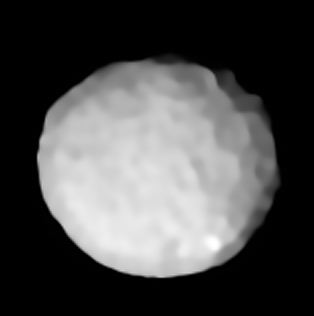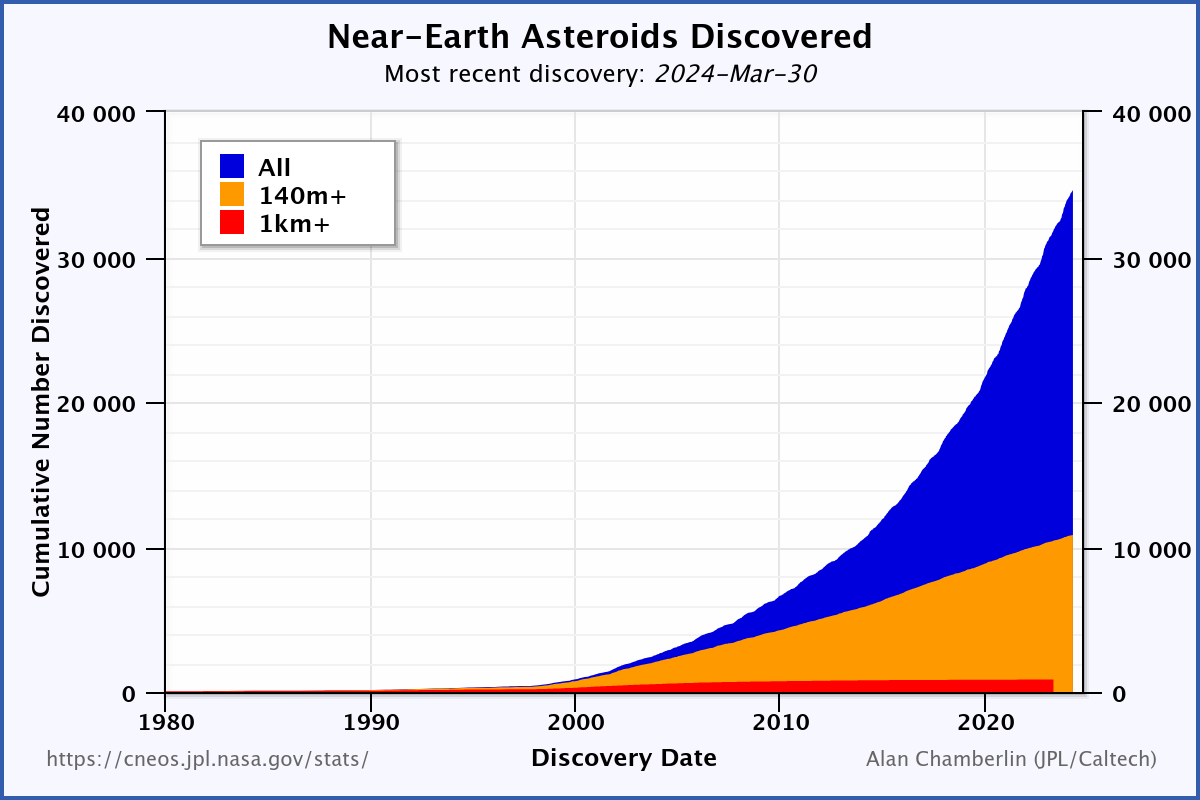|
F-type Asteroids (Tholen)
F-type asteroids are a relatively uncommon type of carbonaceous asteroid, falling into the wider C-group. Characteristics F-type asteroids have spectra generally similar to those of the B-type asteroids, but lack the "water" absorption feature around 3 μm indicative of hydrated minerals, and differ in the low wavelength part of the ultraviolet spectrum below 0.4 μm. The F-type and B-type asteroids are not distinguishable with the criteria used in the SMASS classification, so in that scheme are grouped together under the B-type. See also *Asteroid spectral types An asteroid spectral type is assigned to asteroids based on their emission spectrum, color, and sometimes albedo. These types are thought to correspond to an asteroid's surface composition. For small bodies that are not internally differentiate ... Asteroid spectral classes * {{asteroid-stub ... [...More Info...] [...Related Items...] OR: [Wikipedia] [Google] [Baidu] |
Carbon
Carbon () is a chemical element with the symbol C and atomic number 6. It is nonmetallic and tetravalent In chemistry, the valence (US spelling) or valency (British spelling) of an element is the measure of its combining capacity with other atoms when it forms chemical compounds or molecules. Description The combining capacity, or affinity of an ...—its atom making four electrons available to form covalent bond, covalent chemical bonds. It belongs to group 14 of the periodic table. Carbon makes up only about 0.025 percent of Earth's crust. Three Isotopes of carbon, isotopes occur naturally, Carbon-12, C and Carbon-13, C being stable, while Carbon-14, C is a radionuclide, decaying with a half-life of about 5,730 years. Carbon is one of the Timeline of chemical element discoveries#Ancient discoveries, few elements known since antiquity. Carbon is the 15th Abundance of elements in Earth's crust, most abundant element in the Earth's crust, and the Abundance of the c ... [...More Info...] [...Related Items...] OR: [Wikipedia] [Google] [Baidu] |
Asteroid
An asteroid is a minor planet of the inner Solar System. Sizes and shapes of asteroids vary significantly, ranging from 1-meter rocks to a dwarf planet almost 1000 km in diameter; they are rocky, metallic or icy bodies with no atmosphere. Of the roughly one million known asteroids the greatest number are located between the orbits of Mars and Jupiter, approximately 2 to 4 AU from the Sun, in the main asteroid belt. Asteroids are generally classified to be of three types: C-type, M-type, and S-type. These were named after and are generally identified with carbonaceous, metallic, and silicaceous compositions, respectively. The size of asteroids varies greatly; the largest, Ceres, is almost across and qualifies as a dwarf planet. The total mass of all the asteroids combined is only 3% that of Earth's Moon. The majority of main belt asteroids follow slightly elliptical, stable orbits, revolving in the same direction as the Earth and taking from three to six years to comple ... [...More Info...] [...Related Items...] OR: [Wikipedia] [Google] [Baidu] |
C-type Asteroid
C-type (carbonaceous) asteroids are the most common variety, forming around 75% of known asteroids. They are volatile-rich and distinguished by a very low albedo because their composition includes a large amount of carbon, in addition to rocks and minerals. Their density averages at about . They occur most frequently at the outer edge of the asteroid belt, 3.5 astronomical units (AU) from the Sun, where 80% of the asteroids are of this type, whereas only 40% of asteroids at 2 AU from the Sun are C-type. The proportion of C-types may actually be greater than this, because C-types are much darker (and therefore less detectable) than most other asteroid types except for D-types and others that are mostly at the extreme outer edge of the asteroid belt. Characteristics Asteroids of this class have spectra very similar to those of carbonaceous chondrite meteorites (types CI and CM). The latter are very close in chemical composition to the Sun and the primitive solar nebula minus h ... [...More Info...] [...Related Items...] OR: [Wikipedia] [Google] [Baidu] |
B-type Asteroid
B-type asteroids are a relatively uncommon type of carbonaceous asteroid, falling into the wider C-group; the 'B' indicates these objects are spectrally blue. In the asteroid population, B-class objects can be found in the outer asteroid belt, and also dominate the high-inclination Pallas family which includes the third-largest asteroid 2 Pallas. They are thought to be primitive, volatile-rich remnants from the early Solar System. There are 65 known B-type asteroids in the SMASS classification, and 9 in the Tholen classification as of March 2015. Characteristics Generally similar to the C-type objects, but differing in that the ultraviolet absorption below 0.5 μm is small or absent, and the spectrum is rather slightly bluish than reddish. The albedo also tends to be greater than in the generally very dark C type. Spectroscopy of B-class objects suggests major surface constituents of anhydrous silicates, hydrated clay minerals, organic polymers, magnetite, and sulfides. The c ... [...More Info...] [...Related Items...] OR: [Wikipedia] [Google] [Baidu] |
Ultraviolet
Ultraviolet (UV) is a form of electromagnetic radiation with wavelength from 10 nanometer, nm (with a corresponding frequency around 30 Hertz, PHz) to 400 nm (750 Hertz, THz), shorter than that of visible light, but longer than X-rays. UV radiation is present in sunlight, and constitutes about 10% of the total electromagnetic radiation output from the Sun. It is also produced by electric arcs and specialized lights, such as mercury-vapor lamps, tanning lamps, and black lights. Although long-wavelength ultraviolet is not considered an ionizing radiation because its photons lack the energy to ionization, ionize atoms, it can cause chemical reactions and causes many substances to glow or fluorescence, fluoresce. Consequently, the chemical and biological effects of UV are greater than simple heating effects, and many practical applications of UV radiation derive from its interactions with organic molecules. Short-wave ultraviolet light damages DNA and sterilizes surf ... [...More Info...] [...Related Items...] OR: [Wikipedia] [Google] [Baidu] |
Asteroid Spectral Types
An asteroid spectral type is assigned to asteroids based on their emission spectrum, color, and sometimes albedo. These types are thought to correspond to an asteroid's surface composition. For small bodies that are not internally differentiated, the surface and internal compositions are presumably similar, while large bodies such as Ceres and Vesta are known to have internal structure. Over the years, there has been a number of surveys that resulted in a set of different taxonomic systems such as the Tholen, SMASS and Bus–DeMeo classifications. Taxonomic systems In 1975, astronomers Clark R. Chapman, David Morrison, and Ben Zellner developed a simple taxonomic system for asteroids based on color, albedo, and spectral shape. The three categories were labelled " C" for dark carbonaceous objects, " S" for stony (silicaceous) objects, and "U" for those that did not fit into either C or S. This basic division of asteroid spectra has since been expanded and clarified.Thomas ... [...More Info...] [...Related Items...] OR: [Wikipedia] [Google] [Baidu] |
Asteroid Spectral Types
An asteroid spectral type is assigned to asteroids based on their emission spectrum, color, and sometimes albedo. These types are thought to correspond to an asteroid's surface composition. For small bodies that are not internally differentiated, the surface and internal compositions are presumably similar, while large bodies such as Ceres and Vesta are known to have internal structure. Over the years, there has been a number of surveys that resulted in a set of different taxonomic systems such as the Tholen, SMASS and Bus–DeMeo classifications. Taxonomic systems In 1975, astronomers Clark R. Chapman, David Morrison, and Ben Zellner developed a simple taxonomic system for asteroids based on color, albedo, and spectral shape. The three categories were labelled " C" for dark carbonaceous objects, " S" for stony (silicaceous) objects, and "U" for those that did not fit into either C or S. This basic division of asteroid spectra has since been expanded and clarified.Thomas ... [...More Info...] [...Related Items...] OR: [Wikipedia] [Google] [Baidu] |
Asteroid Spectral Classes
An asteroid is a minor planet of the inner Solar System. Sizes and shapes of asteroids vary significantly, ranging from 1-meter rocks to a dwarf planet almost 1000 km in diameter; they are rocky, metallic or icy bodies with no atmosphere. Of the roughly one million known asteroids the greatest number are located between the orbits of Mars and Jupiter, approximately 2 to 4 AU from the Sun, in the main asteroid belt. Asteroids are generally classified to be of three types: C-type, M-type, and S-type. These were named after and are generally identified with carbonaceous, metallic, and silicaceous compositions, respectively. The size of asteroids varies greatly; the largest, Ceres, is almost across and qualifies as a dwarf planet. The total mass of all the asteroids combined is only 3% that of Earth's Moon. The majority of main belt asteroids follow slightly elliptical, stable orbits, revolving in the same direction as the Earth and taking from three to six years to comple ... [...More Info...] [...Related Items...] OR: [Wikipedia] [Google] [Baidu] |


